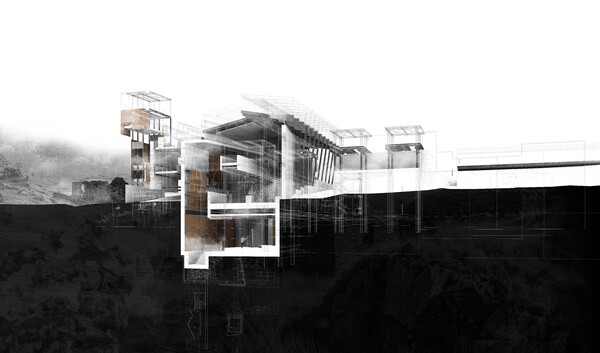'Echoes of Slate': A Proposition of Spatial Acts played out in Cwmorthin, Snowdonia.
This thesis concludes a sequential process of constructing, deconstructing and (Re)Constructing. Finding forms and geometries from the morphology and erosion of a site is crucial to how the architecture is placed. The challenges of creating an architecture of its place and of its time, lodged within a site of such significant heritage, brings with it its own rewards. Situated in the ruined mining village of Cwmorthin (Snowdonia) in the North of Wales, the project takes on a programme of placing IV spatial acts set within the ruins of a scarred landscape ultimately coming together to form the structure of a slate mining museum.
Each architectural move is considered through a careful contextualised approach to the mining site at Cwmorthin. Who are the people? The families of Cwmorthin are all but gone, yet the ruins of a once highly populated site remain. Interventions seek to encapsulate the indigenous commons of a long since desolate site.
Therefore, it provokes the question......
How do Spatial Acts informed by historical commons play out on the landscape of Cwmorthin as a tool to inform People of the Cutlure and Heritage of a site that is Lost?...
This Thesis unfolds a programme through symbolic and monolithic intervention, seeking to re-establish a cultural commons through deconstructing landscapes. In this sense, the site at Cwmorthin becomes a catalogue of morphology, erosion, deconstruction and reconstruction. The placement of spatial acts within the landscape creates a poetic response to the tragedy and destruction documented in the history of the slate mine.
The notions of construct, deconstruct and (re)construct ultimately hold the key to an architecture of its place and of its time which can truly be seen as the fundementals that govern the intervention.


